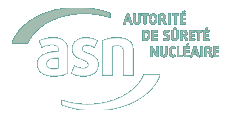| Chapter 01 |
- KNOWLEDGE OF THE HAZARDS AND RISKS FROM IONISING RADIATION
- Biological and health effects
- Evaluation of risks linked to ionising radiation
- Scientific uncertainty and vigilance
- High dose radiation-induced pathologies
- Effects of low doses
- NUCLEAR ACTIVITIES
- Basic nuclear installations
- Definition
- Accident prevention and nuclear safety
- Transport of radioactive and fissile material for civil use;
- Small-scale nuclear activities
- Disposal of radioactive waste
- Contaminated sites
- Industrial activities enhancing natural ionising radiation
- MONITORING OF EXPOSURE TO IONISING RADIATION
- Exposures of the population to natural ionising radiation sources
- Radiations of natural origin (excluding radon)
- Exposure to radon
- External exposure due to cosmic radiation
- Doses received by workers
- Exposure of nuclear workers
- Worker exposure to TENORM
- Flight crew exposure to cosmic radiation
- Doses received by the population as a result of nuclear activities
- Doses received by patients
- Protection of non-human species
- OUTLOOK
|
|
As it is tasked with organising a permanent radiation protection watch, ASN remains particularly attentive to the correct working of the exposure monitoring system set up by IRSN (SISERI), in that the statistics provided constitute valuable national indicators of trends in worker exposure and are useful in assessing the effectiveness of the measures taken by the licensees to apply the optimisation principle. As in the preceding years, the IRSN-published study of worker exposure in 2009 confirms the stabilisation at a low level of the number of monitored workers whose annual dose exceeded 20 mSv, and the stabilisation at a low level of the collective dose following the reduction that began in 1996.
Exposure of the French population to radon is at present inadequately documented, as the estimates produced by IRSN in 1997 (average activity per inhabitant and per département) have never been updated and fail to take account of the measurements taken since 1999 in premises open to the public. The second national action plan for radon risks devised in 2010 provides for the creation of a database containing all the available data on radon exposure of the public and workers, which ASN considers a necessary step towards a clearer understanding of the risk.
ASN also emphasises the benefit of the work of the national patient exposure observatory coordinated by the InVS and the IRSN, which confirms the increase in doses delivered to patients in France through diagnostic examinations, as is the case in other developed countries. At the end of 2010 on the basis of this finding, ASN proposed actions to the Minister of Health aiming at controlling the increase in exposure, based on the effective application of the principles of justification and optimisation.
The Versailles International Radiotherapy Conference organised in December 2009 by ASN, underlined the need to intensify efforts, both locally and internationally, in the field of recording and analysing treatment side-effects and complications, and to develop significant event notification systems for analysis and experience feedback purposes. The conclusions of this conference were subject to joint scrutiny by all the players in order to identify actions to complement the national radiotherapy plan coordinated by the INCa. This subject will be examined by the national plan monitoring committee in 2011. The question of hyper-sensitivity to ionising radiation shall receive particular attention in applied research at both national and international level, with a view to rapidly devising a radiosensitivity test for patients, especially prior to radiotherapy treatment.
|




